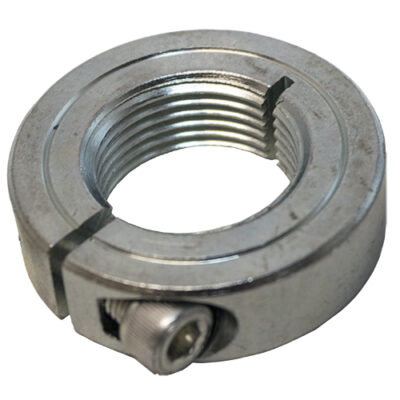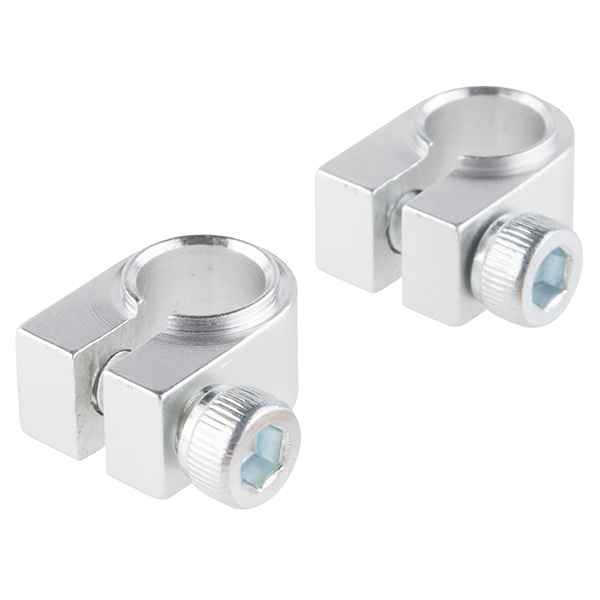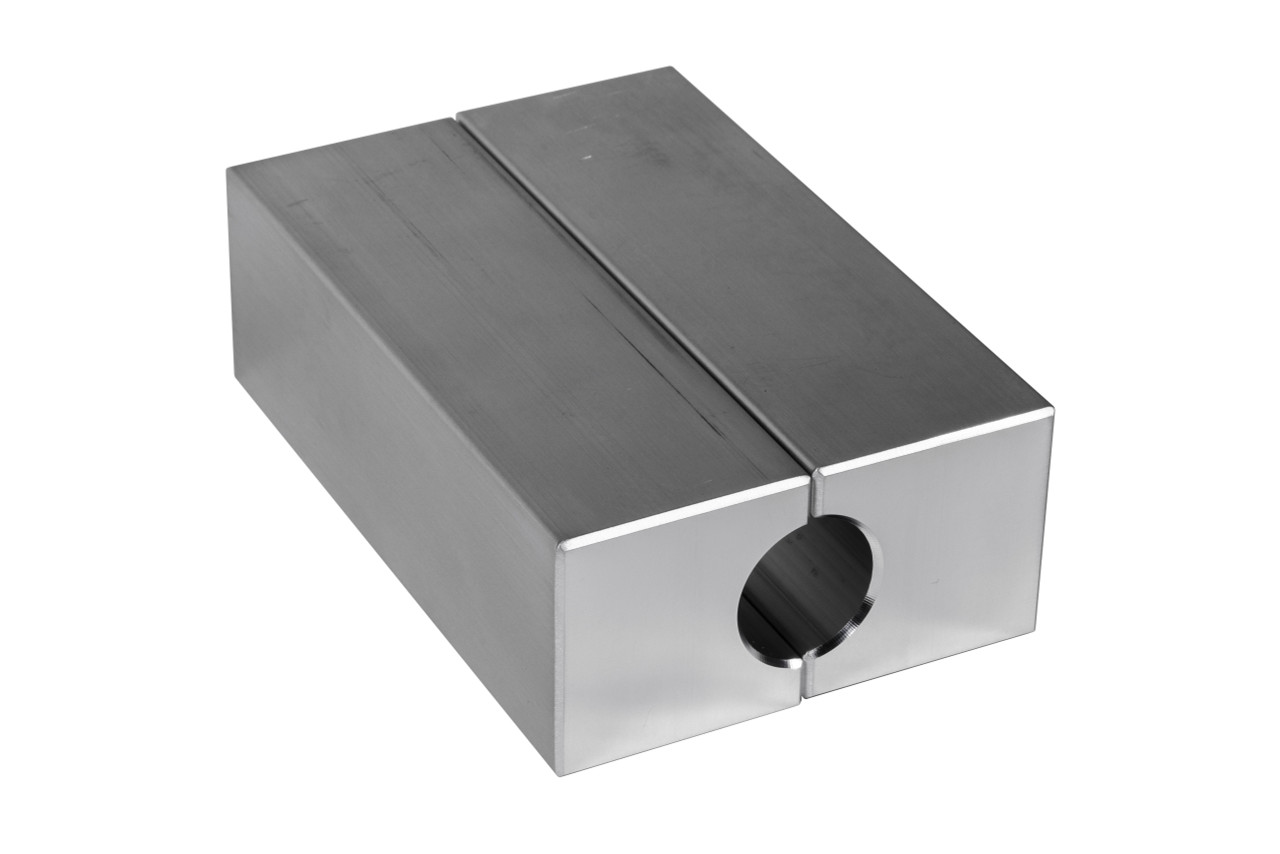
What are the temperature resistance properties of locking collars, and how do they perform in extreme conditions?
Locking collars are designed to provide secure and reliable fastening in various industrial applications. Their temperature resistance properties play a crucial role in determining their performance in extreme conditions. Here’s an overview of the temperature resistance properties of locking collars and how they perform in extreme conditions:
Locking collars are typically made from materials that exhibit good temperature resistance. Common materials used for locking collars include stainless steel, carbon steel, aluminum, and various types of thermoplastics. The specific material composition and construction of the locking collar influence its temperature resistance capabilities.
Temperature Resistance Range:
The temperature resistance range of locking collars can vary depending on the material used. Stainless steel locking collars, for example, generally offer excellent temperature resistance, with the ability to withstand high temperatures ranging from 500°F (260°C) and above. Carbon steel locking collars typically have a lower temperature resistance, typically up to around 400°F (204°C). Thermoplastic locking collars can have a temperature resistance range that varies depending on the specific thermoplastic material used.
Performance in High Temperatures:
In high-temperature environments, locking collars with good temperature resistance properties maintain their structural integrity and functionality. They are designed to withstand the thermal expansion and contraction that occurs as the temperature changes without compromising their grip on the shaft. High-quality locking collars can resist deformation, warping, or softening and continue to provide a secure hold on the shaft, ensuring the stability of the components they are securing.
Performance in Low Temperatures:
Locking collars with good temperature resistance properties also perform well in low-temperature conditions. They are designed to withstand the cold temperatures without becoming brittle or losing their grip on the shaft. The materials used in these collars have a low coefficient of thermal expansion, which helps them maintain their dimensional stability and grip even in freezing temperatures. This ensures that the locking collar remains effective in securing the components even in extreme cold environments.
Considerations for Extreme Conditions:
In extreme temperature conditions, such as those found in certain industrial processes or outdoor environments, it is important to consider a few factors when selecting locking collars:
- Material Selection: Choose locking collars made from materials specifically designed for the temperature range of the application. Consider the upper and lower temperature limits and select materials that can withstand the anticipated temperature extremes.
- Material Compatibility: Ensure that the material of the locking collar is compatible with the shaft and the components it is securing. Consider factors such as thermal expansion rates and potential galvanic corrosion when different metals are in contact.
- Sealing and Lubrication: In extreme temperature conditions, it may be necessary to use additional sealing or lubrication to enhance the performance of the locking collar. Sealing can protect against moisture or contaminants, while suitable lubrication can reduce friction and ensure smooth operation.
- Testing and Certification: If the application requires specific temperature resistance certifications, verify that the locking collars meet the required standards. Look for locking collars that have undergone testing and have relevant certifications for temperature performance in extreme conditions.
It’s important to consult with locking collar manufacturers, suppliers, or industry experts to select the most suitable locking collars for your specific temperature requirements. They can provide guidance based on their expertise and knowledge of the performance characteristics of different locking collar materials in extreme conditions.
Overall, locking collars with good temperature resistance properties can perform reliably in extreme temperature conditions, providing secure fastening and maintaining their functionality and grip on the shaft. By considering the temperature resistance range, material selection, and other relevant factors, you can ensure the effective performance of locking collars in extreme temperature environments.

Where can I purchase locking collars with specific certifications for certain industrial standards?
If you are looking to purchase locking collars with specific certifications for certain industrial standards, there are several options available to you. Here are some avenues to explore:
- Specialized Industrial Suppliers:
- Distributors and Manufacturers:
- Trade Shows and Exhibitions:
- Online Marketplaces:
- Professional Networks and Associations:
- Consulting Engineers or Procurement Specialists:
Specialized industrial suppliers that cater to specific industries often carry locking collars with certifications for relevant standards. These suppliers typically have a wide range of products designed for specific applications and can provide guidance on selecting the appropriate locking collars with the desired certifications. Examples of such suppliers include those focusing on the automotive, aerospace, or medical industries.
Reach out to distributors or manufacturers of locking collars directly. Many manufacturers offer locking collars with certifications for specific industrial standards. They can provide information on the certifications their products comply with and help you choose the right locking collars for your requirements. Some manufacturers may also have online catalogs or websites where you can browse their product offerings and certifications.
Attending trade shows and exhibitions related to your specific industry can be a valuable opportunity to connect with suppliers and manufacturers of locking collars. These events often feature exhibitors showcasing their products and certifications. You can engage with them directly, discuss your requirements, and explore available options. Trade shows provide a platform to gather information, compare products, and make informed purchasing decisions.
Online marketplaces that specialize in industrial products and components can be a convenient source for purchasing locking collars with specific certifications. Platforms like Alibaba, Thomasnet, or GlobalSpec offer a wide range of industrial supplies from various suppliers. You can search for locking collars with the desired certifications, compare prices, read customer reviews, and make purchases online.
Engaging with professional networks and industry associations can provide valuable insights and connections to suppliers who offer locking collars with specific certifications. Participate in industry forums, conferences, or online communities where professionals discuss relevant topics. Seek recommendations from industry experts or peers who have experience with locking collars and certifications for specific industrial standards.
If you require specialized assistance in sourcing locking collars with specific certifications, consider consulting with engineers or procurement specialists who have expertise in your industry. These professionals can provide guidance, recommend suppliers, and help navigate the procurement process to ensure compliance with industrial standards.
When purchasing locking collars with specific certifications, it is essential to verify the authenticity and validity of the certifications provided by the suppliers. Request relevant documentation, such as test reports or compliance certificates, to ensure the locking collars meet the required standards. Additionally, consider factors such as product quality, customer support, and delivery options when selecting a supplier or manufacturer.
Ultimately, the availability of locking collars with specific certifications may vary depending on your industry and the particular standards you require. Conduct thorough research, leverage available resources, and engage with trusted suppliers or experts to find the locking collars that meet your specific needs.

Can you recommend locking collars suitable for applications with high torque and vibration?
When it comes to applications with high torque and vibration, it is crucial to choose locking collars that are specifically designed to withstand these demanding conditions. Here are some recommendations for locking collars suitable for such applications:
- Split Collars: Split collars are designed with a cut along their circumference, allowing them to clamp tightly onto the shaft. This design provides excellent holding power, even in applications with high torque and vibration. Split collars distribute the clamping force more evenly, reducing the risk of slippage or damage to the shaft.
- Double Split Collars: Double split collars, also known as two-piece collars, have two cuts along their circumference, creating even greater clamping force and resistance to torque and vibration. The double split design enhances the collar’s ability to grip the shaft tightly, minimizing the chances of loosening or shifting under high load conditions.
- Threaded Collars: Threaded collars feature internal threads that allow for a more secure and adjustable fit. These collars can be tightened by rotating them along the shaft, providing a reliable grip and resistance to torque and vibration. Threaded collars often incorporate locking mechanisms such as set screws or clamping arms to enhance their holding power.
- Ratcheting Collars: Ratcheting collars are designed with teeth or serrations on the inner surface that engage with corresponding teeth on the shaft. This mechanism creates a ratcheting action, preventing the collar from slipping or rotating under high torque or vibration. Ratcheting collars offer excellent holding power and are commonly used in applications requiring precise positioning and resistance to loosening.
- Adhesive-Lined Collars: Adhesive-lined collars utilize an adhesive layer on the inner surface, enhancing their grip and resistance to vibration. The adhesive forms a bond between the collar and the shaft, providing additional security and preventing movement or loosening. These collars are particularly effective in high vibration applications where other types of collars may struggle to maintain their grip.
- Locking Collars with Damping Features: Some locking collars are designed with built-in damping features or materials that help absorb and dissipate vibration energy. These collars can effectively reduce the transmission of vibrations to other components, minimizing the risk of loosening or damage. They are suitable for applications where vibration control is a critical requirement.
When selecting locking collars for high torque and vibration applications, consider factors such as the specific torque and vibration levels, the material and surface finish of the shaft, the environmental conditions, and any additional requirements of the application. Consulting with industry experts or suppliers specializing in locking collars can provide further guidance and ensure that you choose the most suitable option for your specific needs.


editor by CX 2023-11-20
